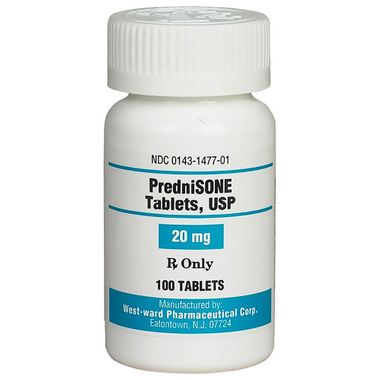Giant Cell Arteritis: Symptoms, Causes, Treatment
What are the symptoms of giant cell arteritis?
Giant cell arteritis (GCA), also known as temporal arteritis, is a type of vasculitis, or inflammation of blood vessels. It most commonly affects the arteries in the head, especially the temporal arteries (located on the sides of the head), but it can also involve arteries in other parts of the body. The symptoms of giant cell arteritis can vary widely but may include:
- Headaches: Persistent, severe headaches, often located in the temples, are a hallmark symptom of giant cell arteritis. These headaches may be throbbing or dull and may worsen with chewing or other movements.
- Tenderness or pain in the temples: The temporal arteries may be tender to the touch or painful.
- Jaw pain or stiffness: Some people with giant cell arteritis experience pain or stiffness in the jaw muscles, especially when chewing.
- Vision changes or vision loss: Giant cell arteritis can affect the blood supply to the eyes, leading to visual disturbances or even permanent vision loss. Symptoms may include blurred vision, double vision, or sudden, painless vision loss in one eye.
- Scalp tenderness: The scalp may feel tender, especially in the areas overlying the affected arteries.
- Fatigue: Many people with giant cell arteritis experience fatigue, weakness, or malaise.
- Flu-like symptoms: Some people may experience symptoms similar to the flu, such as fever, loss of appetite, and weight loss.
- Joint pain and stiffness: Giant cell arteritis can cause joint pain and stiffness, especially in the shoulders and hips.
It’s important to note that giant cell arteritis can vary widely in its presentation, and not everyone with the condition will experience all of these symptoms. Additionally, some people with giant cell arteritis may not have any symptoms at all, especially in the early stages of the disease. If left untreated, giant cell arteritis can lead to serious complications, including blindness and stroke. Therefore, it’s important to seek medical attention promptly from a healthcare provider if you experience symptoms suggestive of giant cell arteritis, especially if you are over the age of 50.
What are the causes of giant cell arteritis?
The exact cause of giant cell arteritis (GCA) is unknown, but it is believed to be an autoimmune disorder, which means that the body’s immune system mistakenly attacks its own tissues. In the case of GCA, the immune system targets the arteries, leading to inflammation. Several factors may contribute to the development of giant cell arteritis, including:
- Genetics: There is evidence to suggest that certain genetic factors may predispose individuals to develop giant cell arteritis. However, the exact genes involved have not been identified.
- Immune system dysfunction: It is believed that an abnormal immune response plays a role in the development of giant cell arteritis. The immune system may mistakenly identify components of the arterial walls as foreign invaders and mount an inflammatory response against them.
- Environmental factors: Some researchers believe that environmental factors, such as infections, may trigger or contribute to the development of giant cell arteritis in genetically susceptible individuals. However, no specific infectious agent has been consistently linked to the disease.
- Age and gender: Giant cell arteritis primarily affects older adults, with the highest incidence occurring in people over the age of 50. Women are more likely to develop giant cell arteritis than men.
- Blood vessel changes: Changes in the structure and function of blood vessels with age may also play a role in the development of giant cell arteritis.
It’s important to note that while these factors may contribute to the development of giant cell arteritis, the exact cause of the disease remains unknown. More research is needed to fully understand the underlying mechanisms involved in the development of giant cell arteritis.
What is the treatment for giant cell arteritis?
The primary treatment for giant cell arteritis (GCA) is corticosteroid medications, such as prednisone, which reduce inflammation and suppress the immune response. Treatment aims to relieve symptoms, prevent complications, and reduce the risk of vision loss and other serious problems associated with GCA.
The typical treatment approach for GCA involves:
- High-dose corticosteroids: Initially, a high dose of corticosteroids, such as prednisone, is often prescribed to quickly reduce inflammation and relieve symptoms. The dose is then gradually tapered down over several months to a lower maintenance dose.
- Monitoring: Regular monitoring of symptoms, blood tests, and sometimes imaging studies (such as ultrasound or MRI) may be recommended to assess the response to treatment and watch for any complications.
- Calcium and vitamin D supplementation: Long-term use of corticosteroids can lead to bone loss (osteoporosis). Therefore, calcium and vitamin D supplements may be recommended to help maintain bone health.
- Other medications: In some cases, additional medications, such as methotrexate or tocilizumab, may be used in combination with corticosteroids to reduce the dose and duration of corticosteroid treatment.
- Eye exams: Regular eye exams are important for monitoring vision and detecting any changes that may indicate complications of GCA, such as optic nerve damage.
It’s important to follow your healthcare provider’s recommendations closely when taking corticosteroids, as these medications can have significant side effects, especially when used long term. It’s also important to report any new or worsening symptoms to your healthcare provider promptly.
In some cases, giant cell arteritis may be difficult to treat or may not respond well to corticosteroids alone. In these cases, other medications or treatments may be considered. It’s important to work closely with your healthcare team to develop a treatment plan that is effective for you and to monitor your condition closely over time.




